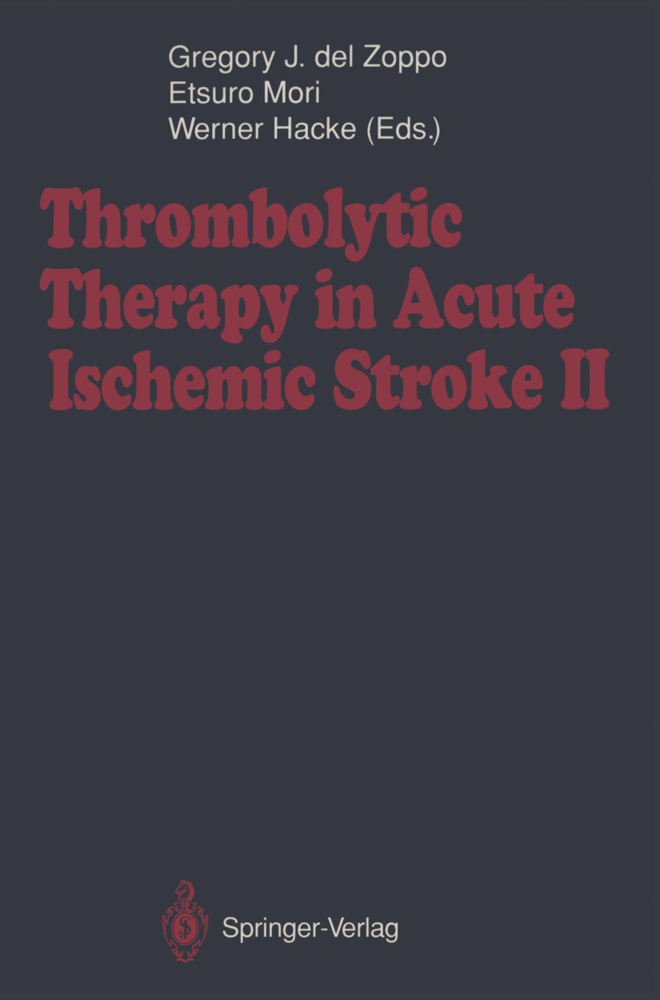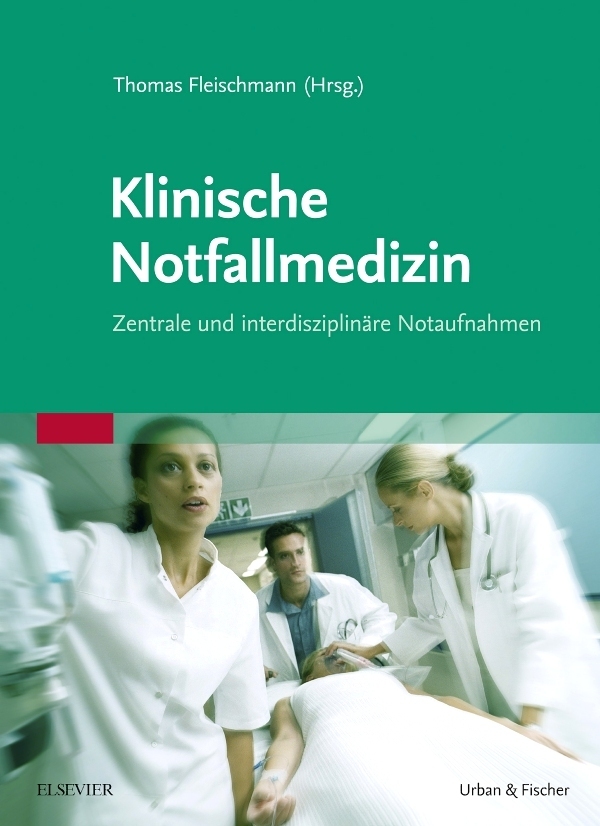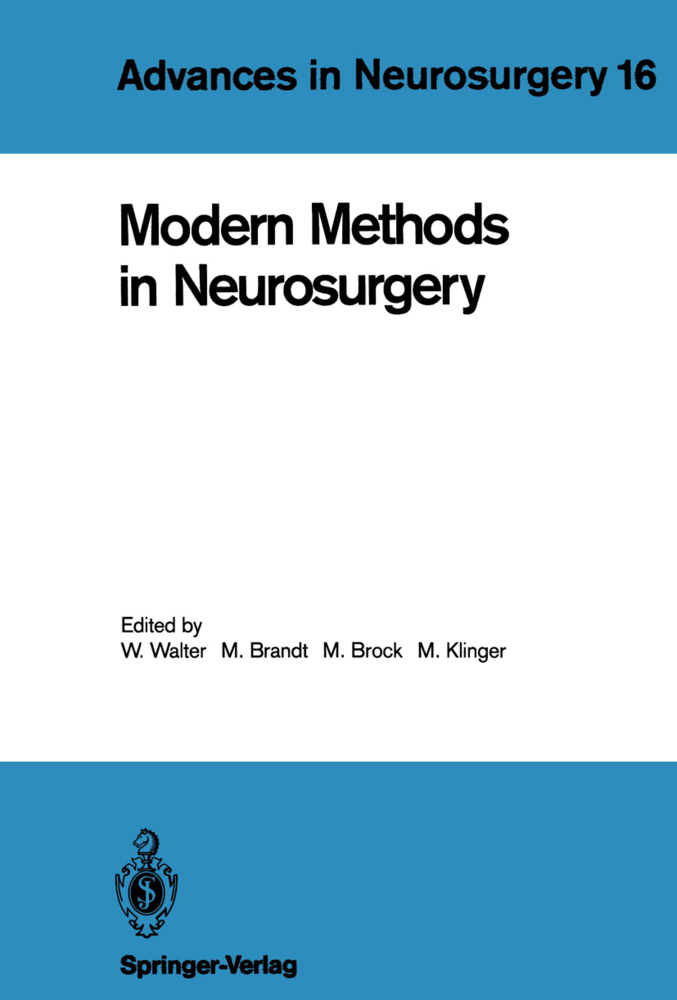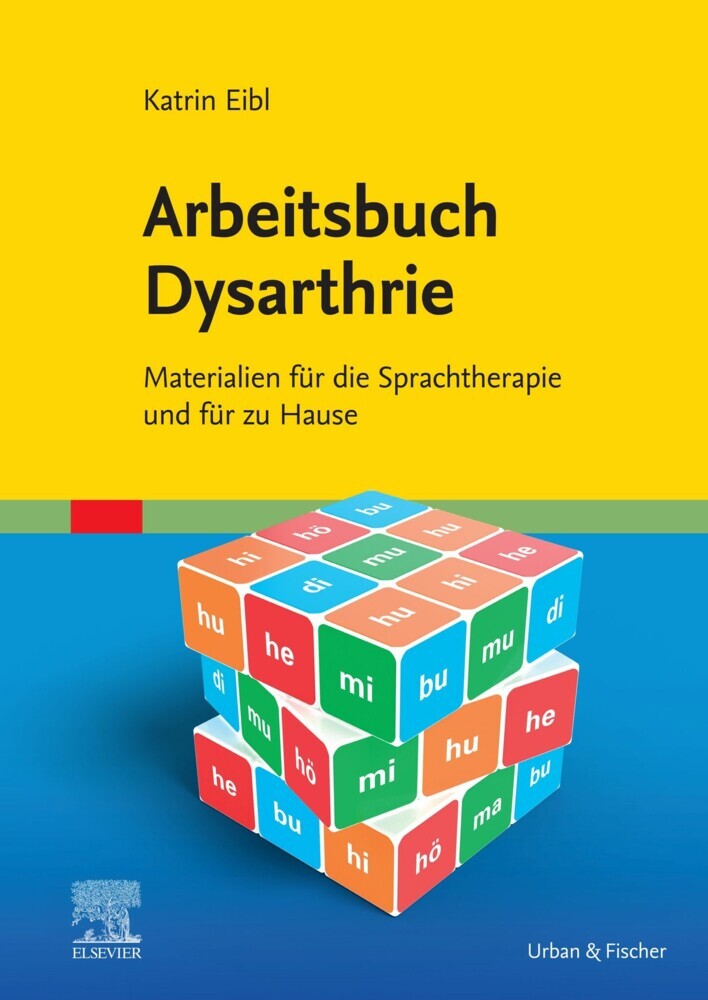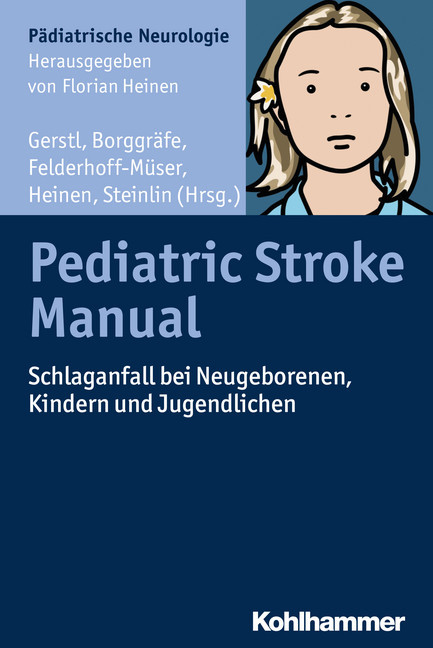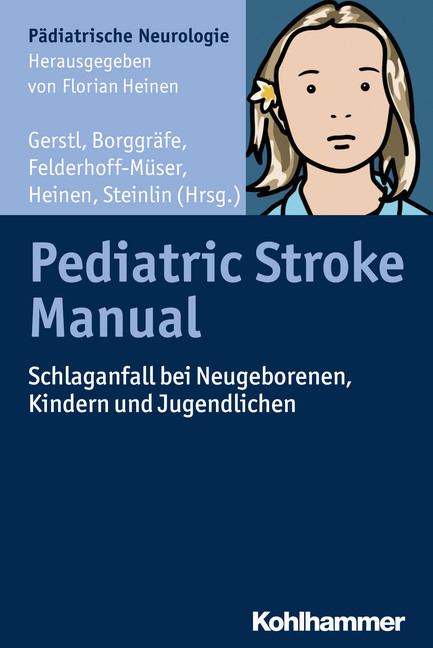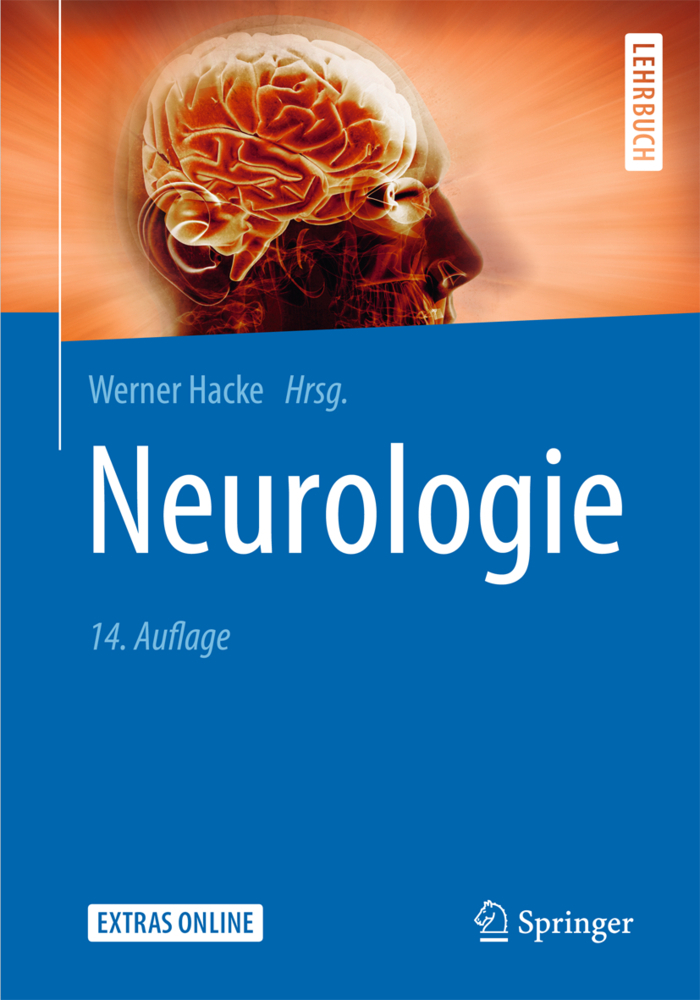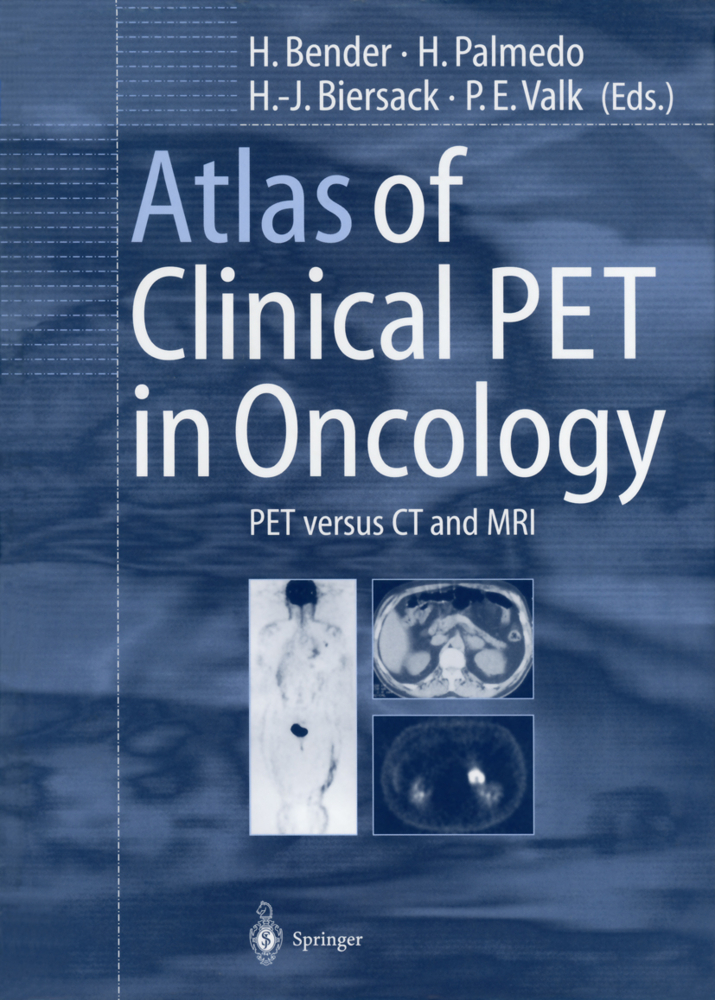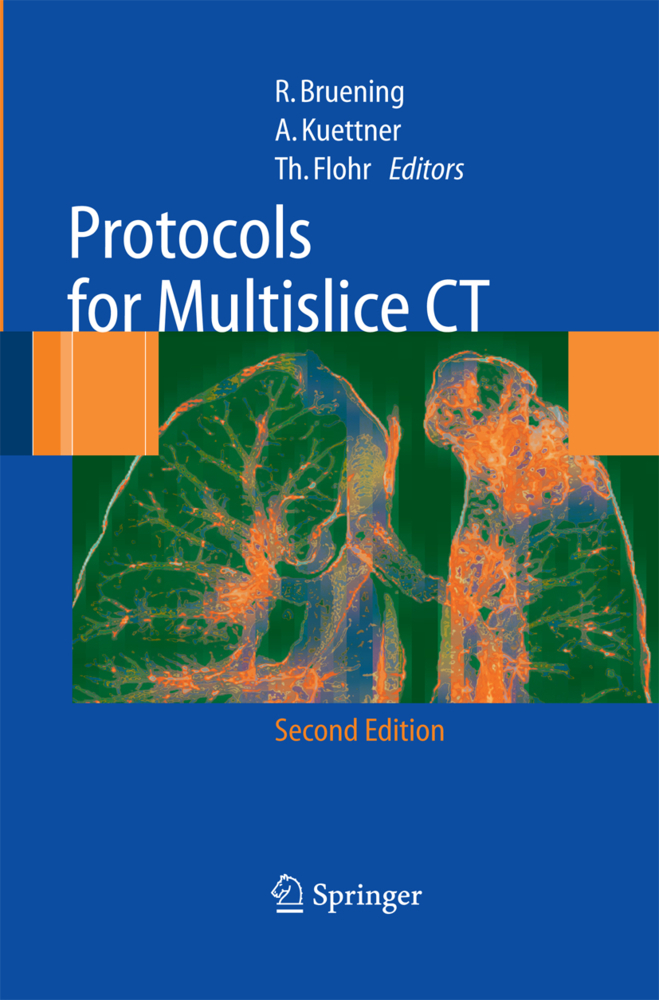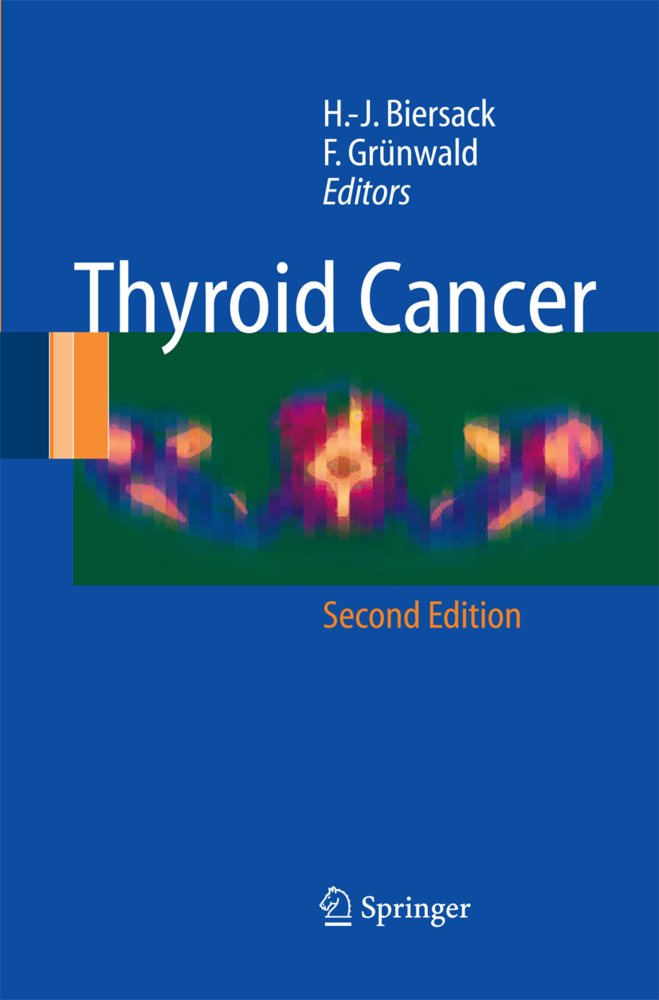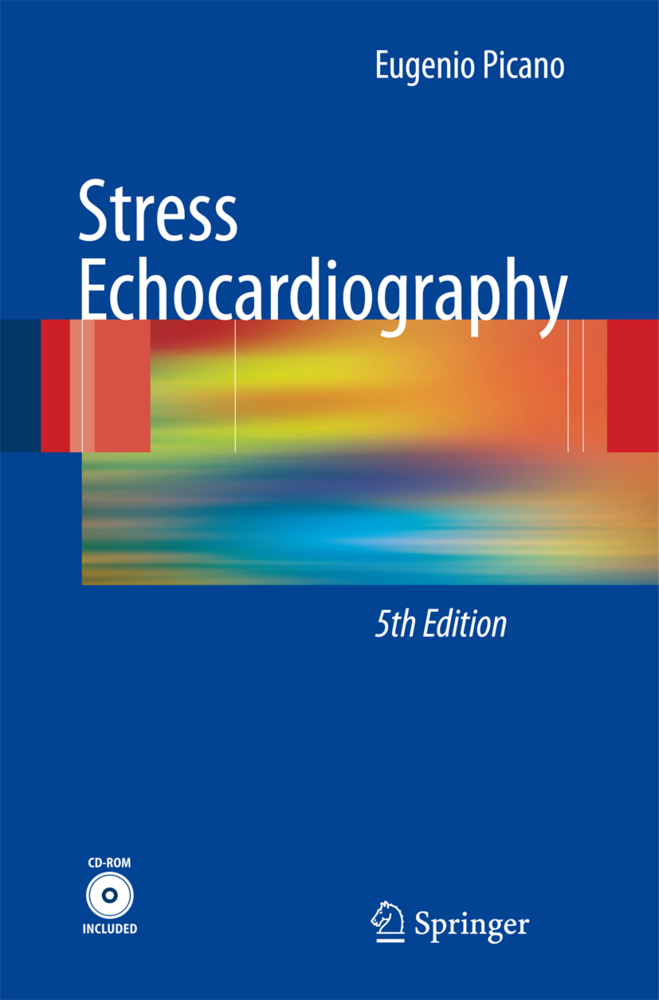Thrombolytic Therapy in Acute Ischemic Stroke II. Vol.2
Thrombolytic Therapy in Acute Ischemic Stroke II. Vol.2
Over the last decade, interest in treatment of ischemic stroke has increased significantly. Perhaps the single most important feature of attempts to improve the outcome of stroke patients has been that the interventions be applied within the very early hours of stroke symptoms. This has spawned efforts to understand the vascular and neuronal responses to cerebral artery reperfusion experimentally. Important prospective clinical studies of thrombolysis in acute ischemic stroke have been completed, and large placebo-controlled, symptom-based studies are now underway worldwide. Here, we consider the central features of those studies, their experimental basis, and the future importance of adjunctive therapies to recanalization in focal brain ischemia acutely. Risks and benefits are discussed. This collection benefits from the opinions of experts and workers in this rapidly evolving and exciting field.
Clinical Outcome of Acute Ischemic Stroke: Prospective Angiographic Studies
The Ischemic Penumbra: Usefulness of PET
Thrombolytic Agents: Lessons for Their Use in Acute Stroke from Myocardial Infarction Experience
Pathogenesis of Secondary Brain Hemorrhage After Ischemia: Lessons from Animal Models ... and a few from man, too!
Clinical Trials of Fibrinolytic Agents in Carotid Territory Cerebral Ischemia
Symptom-Based Trials of Intravenous rt-PA in Acute Stroke
A Safety and Efficacy Study of Intravenous rt-PA in Patients with Acute Stroke
Recanalization, Infarct Volume, Cerebral Hemorrhage, and Clinical Outcome After Intravenous Recombinant Tissue Plasminogen Activator and Heparin in Acute Carotid Territory Stroke
Intravenous Tissue Plasminogen Activator in Acute Thromboembolic Stroke: A Placebo-Controlled, Double-Blind Trial
The European Cooperative Acute Stroke Study (ECASS)
On the Estimation of the Sample Size for the ECASS Study
Australian Streptokinase Trial (ASK)
Thrombolytic and Antithrombotic Therapy in Acute Ischemic Stroke. Multicenter Acute Stroke Trial - Italy (MAST-I)
Discussion Summary: Clinical Trials in Progress
Other Applications of Fibrinolytic Agents in the Central Nervous System
Acute Central Retinal Artery Occlusion and the Role of Thrombolysis
Current Status of Fibrinolysis for the Rapid Dissolution of Subarachnoid and Intraventricular Clot
Discussion Summary: Other Applications of Fibrinolytic Agents in the Central Nervous System
Insights into the Pathogenesis of Cerebral Ischemia Relevant to Fibrinolysis
Deterioration of Acute Stroke
Early Spontaneous Recanalization ofThromboembolic Stroke
Spectacular Shrinking Deficits in Acute Ischemic Stroke
The Significance of Various Factors Associated with Hemorrhagic Transformation in Patients Treated with Recombinant Tissue Plasminogen Activator for Acute Stroke
Thrombolysis: Stroke Subtype and Embolus Type
The Prognostic Value of Collateral Blood Flow in Acute Middle Cerebral Artery Occlusion
Morphological Evidence of Progressive Microvascular Impairment in Middle Cerebral Artery Occlusion-Reperfusion
Discussion Summary: Insights into the Pathogenesis of Cerebral Ischemia Relevant to Fibrinolysis
Diagnosis and Assessment of Outcomes in Acute Cerebral Ischemia
The Relevance of CT Scanning and Angiography for Patients with Acute Stroke Treated with Recombinant Tissue Plasminogen Activator
Recanalization of the Embolically Occluded Middle Cerebral Artery in Acute Stroke Patients: Noninvasive Assessment and Outcome
Potential Role of Magnetic Resonance Imaging in Selecting Patients for Thrombolytic Therapy
The Role of SPECT in Acute Stroke Thrombolysis
Clinical and Brain Hemodynamic Evaluations of Thrombolytic Therapy in Acute Ischemic Stroke: SPECT Study
The Relevance of Neurological and Functional Outcome Scales for Acute Stroke Trials
Discussion Summary: Diagnosis and Assessment of Outcomes in Acute Cerebral Ischemia
Ancillary Therapy for Cerebrovascular Reperfusion
Neuronal Protection and Recanalization Strategies: Is More Better?
Strategies Which Decrease Post-Reperfusion Lipid Peroxidation
Anti-PMN Leukocyte Strategies and Their Application to Focal Cerebral Ischemia
Von Willebrand Factor as a Target for Antithrombotic Intervention
Neuronal Protection: Is There a Role for Gangliosides or Ca2+-Channel Blockers?
Discussion Summary: Ancillary Therapyfor Cerebrovascular Reperfusion
Open Communications
A Meta-Analysis of All Published Data on the Use of Thrombolytic Therapy to Treat Acute Ischemic Stroke
Causes of Delayed Treatment of Stroke Patients Enrolled in t-PA Protocols
A Demming Approach to Recruiting: The National Institute of Neurological Disease and Stroke (NINDS) t-PA Stroke Trial Experience
Local Intra-arterial Fibrinolytic Therapy Within the Cerebral Arteries: Effectiveness of rt-PA Concerning Recanalization Rate and Time
Relation of Thrombolytic Reperfusion and of Collateral Circulation to Outcome in Patients Suffering Cerebral Main Artery Occlusion
Factors Related to Intracranial Hematoma Formation in Patients Receiving t-PA for Acute Ischemic Stroke
Transcranial Doppler Sonographic (TCD) Monitoring of Basilar Artery Thrombolysis
HMPAO SPECT Measures Reperfusion After Thrombolytic Therapy in Acute Stroke
A Cell Culture Model of Reperfusion Injury: Neutrophil-Mediated Brain Endothelial Cytotoxicity
Modification of Brain Ischemia Due to Embolic Stroke by Tissue-Type Plasminogen Activator With and Without Heparin in a Rabbit Model
Reduction of Infarct Volume and Mortality by Thrombolysis with rt-PA in an Embolic Stroke Model
Discussion Summary: Open Communications
Clinical Trial Development
Clinical Trials Sponsored by Companies Versus the NIH
Blindness and Thrombolysis.
Background to Thrombolytic Therapy in Acute Ischemic Stroke
Therapy for Acute Ischemic Stroke: Clinical Needs and Statistical BurdensClinical Outcome of Acute Ischemic Stroke: Prospective Angiographic Studies
The Ischemic Penumbra: Usefulness of PET
Thrombolytic Agents: Lessons for Their Use in Acute Stroke from Myocardial Infarction Experience
Pathogenesis of Secondary Brain Hemorrhage After Ischemia: Lessons from Animal Models ... and a few from man, too!
Clinical Trials of Fibrinolytic Agents in Carotid Territory Cerebral Ischemia
Symptom-Based Trials of Intravenous rt-PA in Acute Stroke
A Safety and Efficacy Study of Intravenous rt-PA in Patients with Acute Stroke
Recanalization, Infarct Volume, Cerebral Hemorrhage, and Clinical Outcome After Intravenous Recombinant Tissue Plasminogen Activator and Heparin in Acute Carotid Territory Stroke
Intravenous Tissue Plasminogen Activator in Acute Thromboembolic Stroke: A Placebo-Controlled, Double-Blind Trial
The European Cooperative Acute Stroke Study (ECASS)
On the Estimation of the Sample Size for the ECASS Study
Australian Streptokinase Trial (ASK)
Thrombolytic and Antithrombotic Therapy in Acute Ischemic Stroke. Multicenter Acute Stroke Trial - Italy (MAST-I)
Discussion Summary: Clinical Trials in Progress
Other Applications of Fibrinolytic Agents in the Central Nervous System
Acute Central Retinal Artery Occlusion and the Role of Thrombolysis
Current Status of Fibrinolysis for the Rapid Dissolution of Subarachnoid and Intraventricular Clot
Discussion Summary: Other Applications of Fibrinolytic Agents in the Central Nervous System
Insights into the Pathogenesis of Cerebral Ischemia Relevant to Fibrinolysis
Deterioration of Acute Stroke
Early Spontaneous Recanalization ofThromboembolic Stroke
Spectacular Shrinking Deficits in Acute Ischemic Stroke
The Significance of Various Factors Associated with Hemorrhagic Transformation in Patients Treated with Recombinant Tissue Plasminogen Activator for Acute Stroke
Thrombolysis: Stroke Subtype and Embolus Type
The Prognostic Value of Collateral Blood Flow in Acute Middle Cerebral Artery Occlusion
Morphological Evidence of Progressive Microvascular Impairment in Middle Cerebral Artery Occlusion-Reperfusion
Discussion Summary: Insights into the Pathogenesis of Cerebral Ischemia Relevant to Fibrinolysis
Diagnosis and Assessment of Outcomes in Acute Cerebral Ischemia
The Relevance of CT Scanning and Angiography for Patients with Acute Stroke Treated with Recombinant Tissue Plasminogen Activator
Recanalization of the Embolically Occluded Middle Cerebral Artery in Acute Stroke Patients: Noninvasive Assessment and Outcome
Potential Role of Magnetic Resonance Imaging in Selecting Patients for Thrombolytic Therapy
The Role of SPECT in Acute Stroke Thrombolysis
Clinical and Brain Hemodynamic Evaluations of Thrombolytic Therapy in Acute Ischemic Stroke: SPECT Study
The Relevance of Neurological and Functional Outcome Scales for Acute Stroke Trials
Discussion Summary: Diagnosis and Assessment of Outcomes in Acute Cerebral Ischemia
Ancillary Therapy for Cerebrovascular Reperfusion
Neuronal Protection and Recanalization Strategies: Is More Better?
Strategies Which Decrease Post-Reperfusion Lipid Peroxidation
Anti-PMN Leukocyte Strategies and Their Application to Focal Cerebral Ischemia
Von Willebrand Factor as a Target for Antithrombotic Intervention
Neuronal Protection: Is There a Role for Gangliosides or Ca2+-Channel Blockers?
Discussion Summary: Ancillary Therapyfor Cerebrovascular Reperfusion
Open Communications
A Meta-Analysis of All Published Data on the Use of Thrombolytic Therapy to Treat Acute Ischemic Stroke
Causes of Delayed Treatment of Stroke Patients Enrolled in t-PA Protocols
A Demming Approach to Recruiting: The National Institute of Neurological Disease and Stroke (NINDS) t-PA Stroke Trial Experience
Local Intra-arterial Fibrinolytic Therapy Within the Cerebral Arteries: Effectiveness of rt-PA Concerning Recanalization Rate and Time
Relation of Thrombolytic Reperfusion and of Collateral Circulation to Outcome in Patients Suffering Cerebral Main Artery Occlusion
Factors Related to Intracranial Hematoma Formation in Patients Receiving t-PA for Acute Ischemic Stroke
Transcranial Doppler Sonographic (TCD) Monitoring of Basilar Artery Thrombolysis
HMPAO SPECT Measures Reperfusion After Thrombolytic Therapy in Acute Stroke
A Cell Culture Model of Reperfusion Injury: Neutrophil-Mediated Brain Endothelial Cytotoxicity
Modification of Brain Ischemia Due to Embolic Stroke by Tissue-Type Plasminogen Activator With and Without Heparin in a Rabbit Model
Reduction of Infarct Volume and Mortality by Thrombolysis with rt-PA in an Embolic Stroke Model
Discussion Summary: Open Communications
Clinical Trial Development
Clinical Trials Sponsored by Companies Versus the NIH
Blindness and Thrombolysis.
DelZoppo, Gregory J.
Mori, Etsuro
Hacke, Werner
| ISBN | 978-3-540-56442-3 |
|---|---|
| Artikelnummer | 9783540564423 |
| Medientyp | Buch |
| Copyrightjahr | 1993 |
| Verlag | Springer, Berlin |
| Umfang | XIV, 334 Seiten |
| Abbildungen | XIV, 334 p. 36 illus. |
| Sprache | Englisch |

